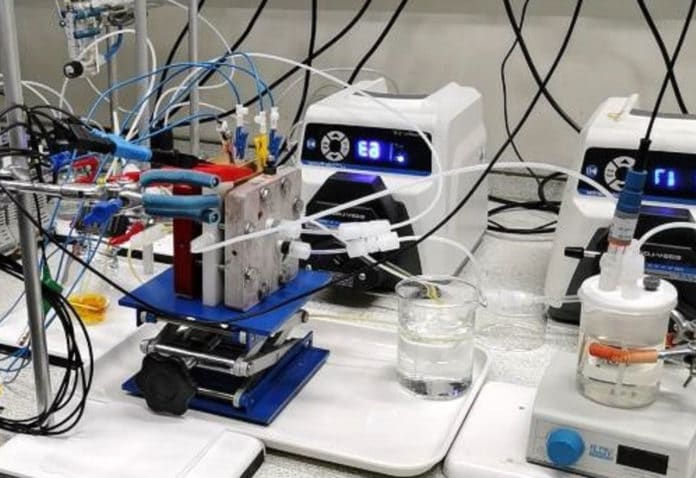The rapid deployment of renewable energy such as solar and wind power has increased the demand for grid-scale long-duration energy storage technologies. In this regard, redox flow batteries (RFB) demonstrated great potential for medium- to large-scale energy storage applications. However, the current cost of the RFBs remained too high for widespread commercial adoption.
According to Imperial College London researchers, a new battery design approach could provide the key to low-cost, long-term energy storage. The team of engineers has developed a polysulfide-air redox flow battery (PSA RFB) with two membranes. The dual membrane design overcomes the main problems with this type of large-scale battery, opening up its potential to store excess energy from renewable sources for a long period of time.
The Imperial team searched for an alternative to the electrolyte used in conventional redox flow batteries – vanadium – which is expensive and primarily sourced from either China or Russia. In their approach, researchers used a liquid as one electrolyte and gas as the other – in this case, polysulfide (sulfur dissolved in an alkaline solution) and air. However, the performance of polysulfide-air batteries is limited because no membrane could fully enable the chemical reactions to take place while still preventing polysulfide from crossing over into the other part of the cell.
“If the polysulfide crosses over into the air side, then you lose material from one side, which reduces the reaction taking place there and inhibits the activity of the catalyst on the other,” explained Dr. Mengzheng Ouyang from Imperial’s Department of Earth Science and Engineering. “This reduces the performance of the battery – so it was a problem we needed to solve.”
Researchers developed an alternative approach that uses two membranes to separate the polysulfide and the air, with a solution of sodium hydroxide between them. All the materials, including the membranes, are relatively cheap and widely available. In addition, the design provides far more choice in the materials that can be used.
In the experiments, researchers found that the new polysulfide-air redox flow battery was able to provide significantly more power, up to 5.8 milliwatts per centimeter squared. They calculated the energy cost – the price of the storage materials in relation to the amount of energy stored – to be around $2.5 per kilowatt-hour. The power cost – the rate of charge and discharge achieved in relation to the price of the membranes and catalysts in the cell – was found to be around $1600 per kilowatt. Though this is too high for large-scale energy storage, the team believes further improvements are readily achievable.
“To make this cost-effective for large-scale storage, a relatively modest improvement in performance would be required, which could be achieved by changes to the catalyst to increase its activity or by further improvements in the membranes used,” said Professor Nigel Brandon, who is also Dean of the Faculty of Engineering.
